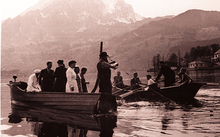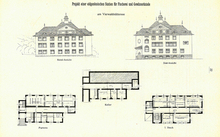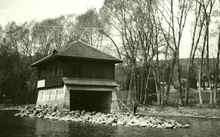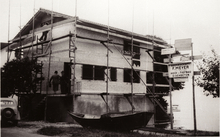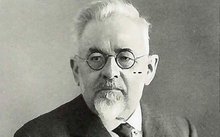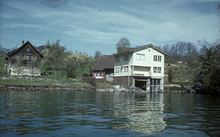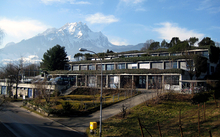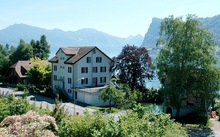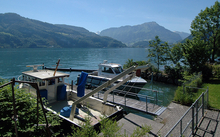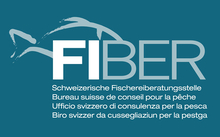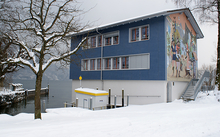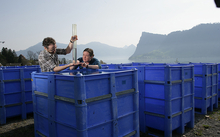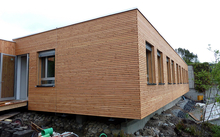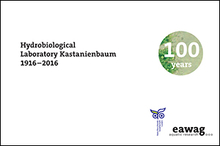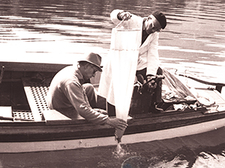Hydrobiology laboratory in Kastanienbaum
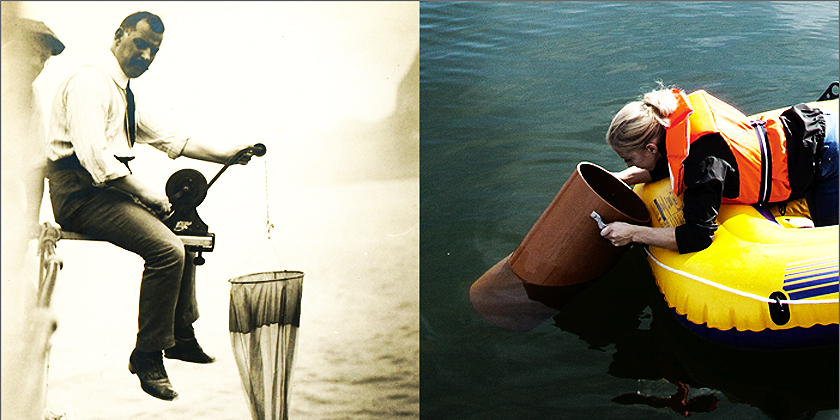
In 1916 the “Naturforschende Gesellschaft Luzern” (Lucerne Society for Natural Sciences) set up a hydrobiology laboratory in Kastanienbaum. The time had come to reveal the depths of the lake, and besides, a well-equipped base was also needed for running the Society’s courses on algae, aquatic plants and fish, which they already been delivering, as well as courses on the chemical and physical properties of the lake. In 1960, at a time when the Swiss lakes were not in a terribly clean condition, the somewhat time-worn facility was taken over by Eawag. Countless middle school classes have spent their biology field trips here, and today, over 100 scientists from all over the world work in the upgraded and continually modernised buildings. From its humble beginnings as a small laboratory, it has grown into its current status as a competence centre for ecology, evolution and biogeochemistry.
In 2016 Eawag celebrated the 100-year anniversary of the establishment of the hydrobiology laboratory with various events aimed at specialists and the wider public.
Chronology
A few highlights of the lab’s history:
1895
Exploring Lake Lucerne: With the help of the Lucerne Society for Natural Sciences and middle school teacher Hans Bachmann, a “Programme of limnological study of Lake Lucerne” is drafted.
1912
Big plans: Hans Bachmann submits plans to the federal government for a “Federal Station for Fishing and Hydrology on Lake Lucerne”. The projected cost: 331,250 Swiss francs. The plans disappear into a drawer in the government offices during the First World War.
1916
Generous doctor: Made possible by a generous donation from medical doctor Fritz Schwyzer and his wife, the Lucerne Society for Natural Sciences celebrates the opening of the newly built laboratory and boathouse on 18 June 1916.
1938
New building erected in record time: In the spring of 1938, the LSNS outlines a specification and looks for a site for a new building. Within a short time, the boathouse and laboratory which still exists today is built, and inaugurated with a small celebration on 25 September 1938.
1940
Death of Hans Bachmann. On 20 February 1949, scientist, teacher and founder of the hydrobiology laboratory Hans Bachmann dies shortly before his 74th birthday.
1960
Eawag takes over: The LSNS offers the laboratory to ETH. From 1959, Eawag runs it on a trial basis and accepts the gift in 1960. The Director of Eawag at the time, Otto Jaag, undertakes modifications and builds an extension, completed in 1964 with help from the “Economic Foundation for Water Protection in Switzerland”.
1977
New building on the hillside: As early as 1965, Eawag director Otto Jaag had already sketched out plans for a project involving a central federal institute for hydrobiology and attached guest house on Lake Lucerne. Under the directorship of Werner Stumm, the first stage of the new build is begun. The second stage is never built.
1996
Conversion and renovation of the “Seeheim”: The former lakeside villa undergoes complete renovation, inside and out, and is adapted to the requirements for research. The multi-purpose room on the ground floor is used for courses, and the upper levels house offices and accommodation. Part of the garden is opened up to the public.
2004
New boat: The Perca, the second new research boat after the Thalassa (1988), is launched. The new boat replaces the “Hans Bachmann”, which had sprung a leak on the lake in 2001 and nearly sunk.
2004
Fishery advisory centre starts: A large-scale research project initiated as a result of declining fish stocks in Switzerland (“Fischnetz” 1998-2004) leads to a joint initiative by Eawag, the Federal Office for the Environment and the Swiss Fishing Association in the form of a fishing advisory office – building bridges between research and practical application.
2007
Reconstruction of the boathouse: The old 1938 laboratory, now referred to as the “Boathouse” is reconstructed and renovated, complete with a mural of the Kastanienbaum Saga by artist Marcel Nuber.
2009
Mesocosms in operation: Tests and simulations in the laboratory are not 100% transferrable to actual lake conditions. But experiments in the lake are difficult to control and replicate. Ecosystem-related questions are therefore investigated with the help of mesocosms.
2012
Total renovation of the terrace building: The laboratory built in 1977 is fully renovated. A completely new ventilation system is installed, along with a cooling system using lake water, resulting in a hugely reduced energy consumption. The temporary pavilion “Castagnetas” is replaced by a simple extension to the building.
-
First Guestbook (1916-1964) [25 MB]

